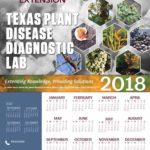 Fireblight of pear or apple
Fireblight of pear or apple
SCIENTIFIC NAME of causal agent: Erwinia amylovora
DISEASE DESCRIPTION
SYMPTOMS: Symptoms of fireblight can appear on flowers, buds, shoots, leaves, and mature stems and branches. Symptoms include water soaking on the petals, peduncle, and ovary. These infected tissues will eventually turn black. Infected leaves will have a blackened midvein and will eventually shrivel and die while remaining on the tree. Infected shoots turn black and curl giving a ‘Shepherd’s Crook’ appearance. When branches are infected the bark will appear water soaked. The underlying wood will become discolored. Often times, infected tissues will exude an amber colored bacterial ooze.
BIOLOGY: Erwinia amylovora is a Gram-negative member of the Enterobacteria family. It is rod-shaped and flagellated, capable of causing infection through the nectaries in flowers and wounds. It affects plants of the Rosaceae family, particularly apples and pears. Infection begins in a localized fashion at nectaries and grafting wounds and becomes systemic once the bacteria enter the xylem where they travel through the vasculature of the plant. The pathogen is most often spread by pollinators as they pick up bacteria from infected flowers and transfer them to neighboring trees. Fire blight, the disease caused by Erwinia amylovora, causes necrosis in plant tissues and can cause entire orchards to appear scorched by fire. 
MANAGEMENT METHODS: The best management methods currently available are simple cultural practices. Once a tree is infected, the only way to get rid of the disease is by eradication. Infected tissues need to be pruned and destroyed to prevent further infection. When removing infected tissue, shears should be dipped in a bleach solution between each cut to prevent cross infection of wounds. Also, because new shoots and succulent tissue are more susceptible, excessive watering and fertilizing should be avoided..
Some sources recommend the use of streptomycin, however, the use of antibiotics leads to resistance and is not a suitable form of control for fireblight.
RESOURCE LINKS:
This resource outlines susceptible hosts, and identification, management, life cycle, and preventative measures related to fireblight in Texas.
http://agrilifelearn.tamu.edu/Fire-Blight-of-Ornamental-Pears-p/eplp-029.htm
This factsheet is authored by Jensen Hayter (PhD student)

Dr. Appel’s 2017 Fall PLPA601 students
Factsheet information for the plant health issues represented by the images on the 2018 TPDDL calendar were written by graduate students enrolled in the Department of Plant Pathology & Microbiology PLPA601 Introductory Plant Pathology course in the 2017 Fall semester (course instructor: Dr. David Appel). This exercise provides an opportunity for a high impact learning activity where the students are tasked with producing an informational output directed to the general public and to provide opportunity for the students to write.

CLICK HERE to return to 2018 TPDDL Calendar page